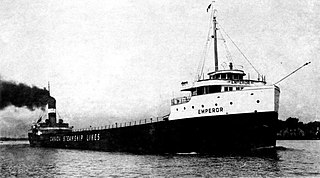The Defoe Shipbuilding Company was a small ship builder established in 1905 in Bay City, Michigan, United States. It ceased to operate in 1976 after failing to renew its contracts with the United States Navy. The site of the former company is now being developed for business and housing on the bank of the Saginaw River.

SS Comet was a steamship that operated on the Great Lakes. Comet was built in 1857 as a wooden-hulled propeller-driven cargo vessel that was soon adapted to carry passengers. It suffered a series of maritime accidents prior to its final sinking in 1875 causing the loss of ten lives. It became known as the only treasure ship of Lake Superior because she carried 70 tons of Montana silver ore when it sank. The first attempts to salvage its cargo in 1876 and 1938 were unsuccessful. Comet was finally salvaged in the 1980s when the Great Lakes Shipwreck Historical Society illegally removed artifacts from the wreck. The artifacts are now the property of the State of Michigan and are on display as a loan to the Great Lakes Shipwreck Museum. The fate of her silver ore cargo is unknown. Comet's wreck is now protected by the Whitefish Point Underwater Preserve as part of an underwater museum.
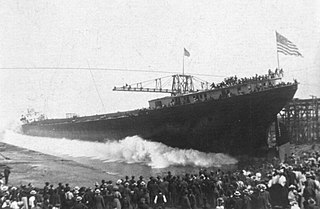
SS Edward Y. Townsend was a 603-foot (184 m) American Great Lakes freighter that served on the Great Lakes. She was primarily used to haul bulk cargoes such as iron ore, coal, grain and occasionally limestone. She was in service from her launching in 1906 to her sinking in 1968. She is best known for sinking on the way to the scrapper, near RMS Titanic, off the coast of Newfoundland.

Augustus B. Wolvin was a 560 ft (170 m) long Great Lakes freighter that had a 63-year career on the Great Lakes. Augustus B. Wolvin was a product of the American Shipbuilding Company of Cleveland, Ohio. She was built for the Acme Steamship Company of Duluth, Minnesota.

The Frank C. Ball was an American Bulk carrier that was built by the Great Lakes Engineering Works of Ecorse, Michigan, for the Globe Steamship Company of Duluth, Minnesota. She was launched on December 9, 1905, as hull #14. She was powered by a 1,700 horsepower triple expansion steam engine and fueled by two coal-fired Scotch marine boilers. Even though Ball was built in 1905, she only entered service in 1906.

The Henry A. Hawgood was an American steel-hulled, propeller-driven lake freighter that was built by the American Ship Building Company of Cleveland, Ohio for service on the Great Lakes of North America and Canada. She was used to haul bulk cargoes such as iron ore, coal and grain.

SS B.F. Jones was a steel-hulled Great Lakes freighter that was named after one of the founders of the Jones and Laughlin Steel Company. She was launched on December 30, 1905 as hull #15. She operated from April 1906 to August 21, 1955 she collided with the steamer Cason J. Callaway. After inspection she was declared a constructive total loss, and scrapped in Duluth, Minnesota.
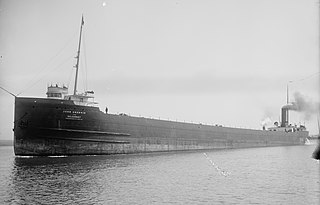
The John Sherwin was an American steel-hulled, propeller-driven Great Lakes freighter built in 1906 by the West Bay City Shipbuilding Company of Bay City, Michigan for service on the Great Lakes of North America. She was used to transport bulk cargoes such as coal, iron ore and grain. She served from her launching in 1906 to her scrapping in 1974, in Germany.

The J.H.G. Hagarty was a 550-foot (170 m) Canadian Great Lakes freighter that served from her launching in 1914 to her scrapping in 1968. The Hagarty was used to haul bulk cargoes such as iron ore, coal, grain and occasionally limestone. She had a length of 550-feet, a beam of 58-feet and a height of 31-feet. She was powered by a 2,400 horsepower triple expansion steam engine and fueled by two coal-fired Scotch marine boilers.

SS Onoko was an iron hulled Great Lakes freighter. She was launched in 1882 in Cleveland, Ohio as hull number #4, and sank on September 14, 1915 in Lake Superior near Knife River, Minnesota. Onoko is thought to be the prototype for every single steel hulled Great Lakes Bulk carrier that ever sailed. These vessels made possible the cheap transport of bulk cargoes such as iron ore, coal and limestone. Her wreckage still remains on the bottom of Lake Superior and was listed on the National Register of Historic Places in 1992.

The SS Lakeland was an early steel-hulled Great Lakes freighter that sank on December 3, 1924, into 205 feet (62 m) of water on Lake Michigan near Sturgeon Bay, Door County, Wisconsin, United States, after she sprang a leak. On July 7, 2015, the wreck of the Lakeland was added to the National Register of Historic Places.

The SS Atlanta was a wooden hulled Great Lakes steamer that sank in Lake Michigan off the coast of Cedar Grove, Wisconsin, United States, after a failed attempt of her being towed to shore ultimately killing 5 out of her 7 crew members on board. Her wreckage still remains at the bottom of the lake, and on November 6, 2017, the wreck of the Atlanta was listed on the National Register of Historic Places.
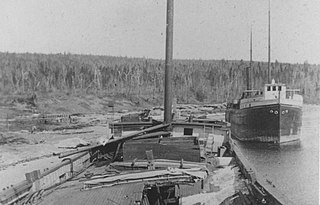
The AmboyandGeorge SpencerShipwreck Site is an archeological shipwreck site which consists of the wrecks of the wooden bulk freighter George Spencer and the wooden schooner-barge Amboy. Both vessels were wrecked during the Mataafa Storm of 1905. In 1994 the site was added to the National Register of Historic Places.
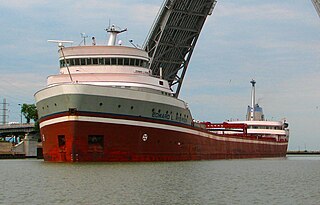
SS Edward L. Ryerson is a steel-hulled American Great Lakes freighter that entered service in 1960. Built between April 1959 and January 1960 for the Inland Steel Company, she was the third of the thirteen so-called 730-class of lake freighters, each of which shared the unofficial title of "Queen of the Lakes" because of their record-breaking length. She was not only the last steam-powered freighter built on the lakes but also the last one that was not a self-unloader. Since 2009, she has been in long-term layup in Superior, Wisconsin. She is one of only two American-owned straight deck lake freighters, the other being John Sherwin, built in 1958.














